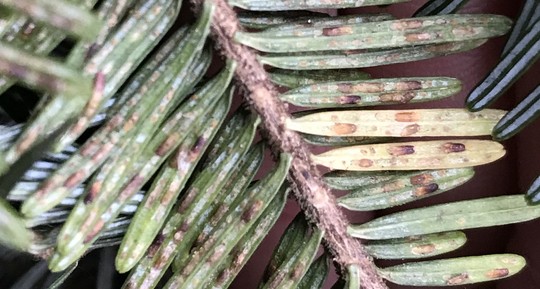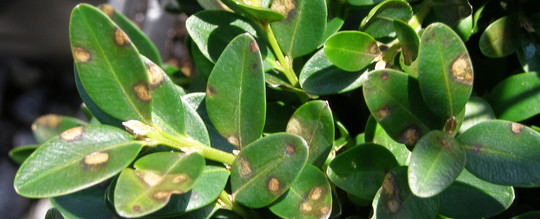|
Having trouble viewing this email? View it as a Web page.
November 5, 2021
Christmas Trees and Holiday Greenery Reminders
The Minnesota Department of Agriculture (MDA) is performing inspections for the Christmas holiday season. As you receive shipments of trees and other holiday greenery, please keep an eye out for the pests listed below. Based on the past several years, our primary concern is the movement of elongate hemlock scale on Fraser fir trees or other material into Minnesota.
Similar to last holiday season, infested material may be ordered destroyed or return to sender if found on inspections. Any steps you can take to work with your suppliers to make sure that infested trees or other material are not coming to Minnesota are greatly appreciated. More information about elongate hemlock scale can be found online.
Posters in multiple sizes and a postcard regarding proper disposal of Christmas trees and holiday greenery are available to print and provide to retail customers making purchases.
Elongate Hemlock Scale
Elongate hemlock scale (EHS) is reported to develop and reproduce on 43 species of native and exotic conifers. Primary hosts include hemlocks (Tsuga sp.), firs (Abies sp.), and spruce (Picea sp.) of which several species are native to the United States. Spruce and fir are reported to be more susceptible than hemlock, but EHS has not become established in areas where these trees predominate.
Distribution
This pest is believed to have been introduced from Japan and was first found in New York in 1908. It is currently established in the eastern United States. It has been intercepted in Minnesota on holiday greenery from 2018-2020, but it is not established in Minnesota.
Biology
Scales are very small insects that secrete a waxy coating for defense and feed on the sap from plants. They have piercing/sucking mouthparts they insert into the host plant for feeding. Once they begin feeding, most species of scales remain stationary on the plant.
In northern regions, EHS completes one generation per year; however, two generations per year occur in southern regions. This insect typically overwinters as an egg or a female carrying eggs. The life cycle consists of immobile adults and mobile immatures called “crawlers.” Males and females look quite different because the males have wings.
Identification / Damage
The EHS female, which would normally be seen if an infestation is present, is dark brown, longer than wide, and typically found on the underside of the needles. However, these insects are very hard to detect. Signs of EHS include a yellow banding on the top of infested needles which can lead to premature needle drop. The crowns of infested trees may have a thin appearance. In the United States, this pest is established in the Atlantic states and sometimes occurs alongside two other exotic pests - a circular hemlock scale (Nuculaspis tsugae) and the hemlock woolly adelgid (Adelges tsugae).
 Elongate hemlock scale on the underside of a tree branch. MDA
While elongate hemlock scale has received a lot of attention during the last several years, there are several other pests that could also hitchhike into Minnesota on holiday materials:
Lymantria dispar (formerly known as gypsy moth)
- Is regulated throughout most of the northeastern U.S., including Cook and Lake counties in northeast Minnesota
- Holiday materials arriving from Lymantria dispar regulated areas must be USDA (or federally) certified and arrive with proper documentation
- Wreaths, swags, birch bark, and birch sticks/logs are regulated by Lymantria dispar quarantines
- Read More
 Lymantria dispar egg mass on a branch. MDA
Oriental bittersweet
- Is a prohibited noxious weed in Minnesota
- Wreaths and other materials offered for sale in Minnesota cannot contain Oriental bittersweet
- Read More
 Oriental bittersweet vine. Note the yellow capsules and red fruit. MDA
Boxwood blight
- Is a pathogen that has not been reported in Minnesota
- Wreaths and other materials offered for sale in Minnesota may contain boxwood must be free of boxwood blight
- Read More
 Symptoms of boxwood blight on the leaves. MDA
Nursery Program
651-201-6507
|